A Healthy Dose of Autumnal Lawn And Order – Autumn Lawn Maintenance Tips

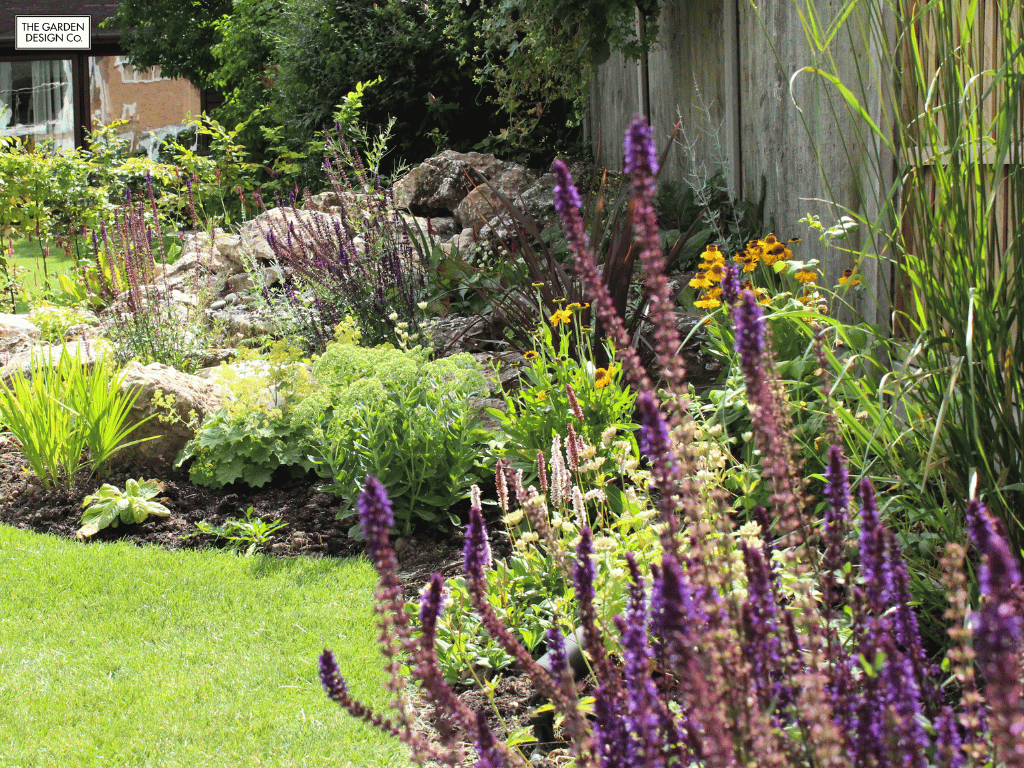
Contemporary garden designs often prioritise clean lines, minimalism, and a sense of harmony with the surrounding environment. Alongside hardscape elements like concrete and metal, plants play a crucial role in creating the desired look. Here, we present our top plant picks that embody the modern aesthetic while adding beauty and interest to any contemporary garden.
With its striking vertical spikes of deep purple flowers, Salvia Nemorosa ‘Caradonna’ is a standout choice for contemporary gardens. This perennial herb is not only visually appealing but also attracts pollinators, such as bees and butterflies, with its nectar-rich blooms. ‘Caradonna’ thrives in full sun and well-drained soil, making it an excellent addition to rock gardens or mixed borders.
This Salvia variety is known for its long blooming period, extending from late spring to early fall. Its slender, upright form adds a vertical dimension to garden beds, creating a sense of height and structure. Pair ‘Caradonna’ with other low-growing plants or ornamental grasses for a striking contrast.
Originating from the Balkan Peninsula, Salvia Nemorosa ‘Caradonna’ is a cultivar that has gained popularity for its unique colour and form. The deep purple flowers are not only visually striking but also serve as a rich food source for beneficial insects, aiding in the overall ecological balance of the garden.
In addition to its ornamental value, ‘Caradonna’ has historical significance as well. The genus Salvia has a long history of medicinal and culinary uses, with some species believed to have healing properties. While ‘Caradonna’ is primarily grown for its aesthetic appeal today, it pays homage to the traditional uses of the Salvia genus.
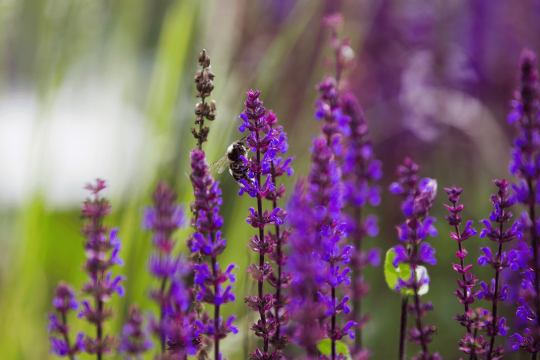
For gardeners seeking a plant with intricate and delicate blooms, Astrantia Major fits the bill perfectly. Also known as masterwort, this perennial produces clusters of small star-shaped flowers surrounded by papery bracts in shades of white, pink, or burgundy. The unique texture and intricate detail of the blooms make Astrantia Major a captivating focal point in contemporary garden designs.
Thriving in partial shade to full shade, Astrantia Major prefers moist soil and is well-suited for woodland gardens or shady borders. Its long blooming period, which lasts from early to mid-summer, ensures a continuous display of charming flowers. Consider pairing Astrantia Major with ferns or hostas for a visually stunning combination.
Originating from Europe, Astrantia Major has a rich history steeped in folklore and medicinal uses. The plant’s intricate blooms were used in traditional herbal medicine to treat various ailments, ranging from headaches to digestive issues.
Furthermore, Astrantia Major is a favourite among pollinators, attracting bees and butterflies with its nectar-rich flowers. This makes it an excellent choice for gardeners looking to create a wildlife-friendly garden. The plant’s ability to self-seed can lead to naturalised colonies in the right conditions, adding a touch of wild beauty to any outdoor space.
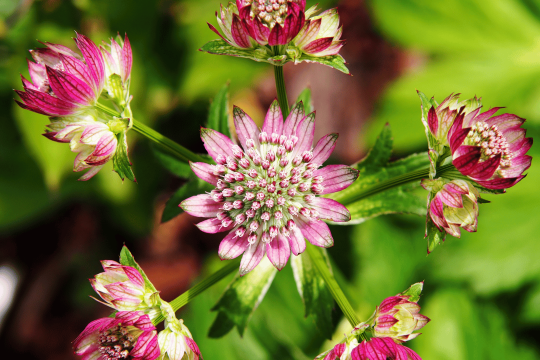
Nothing exudes contemporary garden glamour quite like dahlias. Dahlia ‘Totally Tangerine’ stands out with its vibrant, orangey-pink blooms that add a pop of colour to any planting scheme. This dahlia variety is a must-have for those seeking a modern and eye-catching display.
‘Totally Tangerine’ thrives in full sun and well-drained soil. Its large, semi-double flowers bloom abundantly from mid-summer until the first frost, attracting pollinators like bees and butterflies to your garden. This dahlia looks stunning when planted en masse or when combined with other warm-toned flowers like rudbeckia or echinacea.
Originating from Mexico and Central America, dahlias were named after the Swedish botanist Anders Dahl. They were introduced to Europe in the late 18th century and have since become a popular choice for gardeners worldwide. The ‘Totally Tangerine’ cultivar is a relatively recent addition to the dahlia family, bred for its unique colour and modern appeal.
When planting ‘Totally Tangerine’ dahlias, it is essential to ensure they receive adequate sunlight to encourage healthy growth and prolific flowering. These plants are relatively low-maintenance but benefit from deadheading to prolong the blooming period. Dahlias are known for their tuberous roots, which should be lifted and stored in a cool, dry place over winter in regions with frosty conditions.
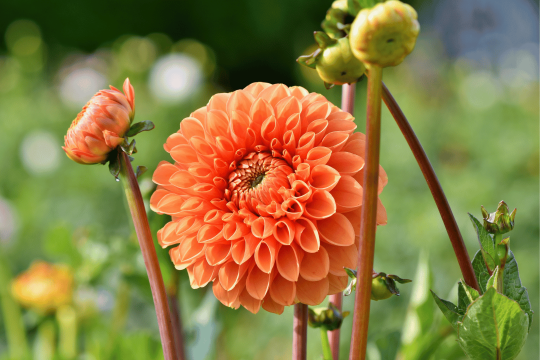
Adding a calming and serene touch to contemporary gardens, Geranium ‘Brookside’ boasts delicate clusters of rich blue-violet flowers that float above deeply lobed green leaves. This hardy geranium is well-suited for a variety of garden styles, including modern and cottage-inspired designs.
‘Brookside’ thrives in full sun to partial shade and prefers well-drained soil. Its long blooming period, which lasts from late spring to early fall, ensures a continuous display of beautiful blooms. Use ‘Brookside’ as a ground cover or plant it alongside other flowering perennials like lavender or nepeta for a visually appealing combination.
Originating from the hybridisation of Geranium pratense and Geranium clarkei ‘Kashmir Purple’, Geranium ‘Brookside’ inherits the best qualities of its parentage. The rich blue-violet flowers with delicate white centres create a striking contrast against the deeply lobed foliage, making it a standout feature in any garden setting.
When planting Geranium ‘Brookside’, ensure the soil is enriched with organic matter to promote healthy growth and abundant flowering. Deadheading spent blooms regularly will encourage the plant to produce more flowers, prolonging the blooming period well into autumn.
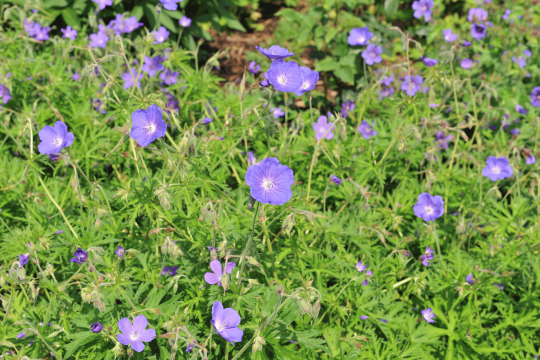
Sometimes referred to as “tall verbena,” Verbena Bonariensis is a striking perennial that adds an airy and ethereal quality to contemporary garden designs. Its slender, branching stems hold clusters of small, vibrant purple flowers that sway gracefully in the wind, creating a sense of movement and whimsy in the garden.
Thriving in full sun and well-drained soil, Verbena Bonariensis is an excellent choice for borders or mixed herbaceous plantings. Its long blooming period, which extends from mid-summer to early fall, ensures a continuous show of colour. Pair Verbena Bonariensis with grasses or other airy perennials like Gaura or Pennisetum for a dynamic and modern combination.
Verbena Bonariensis is not only a visual delight but also attracts pollinators such as bees and butterflies to your garden, contributing to the ecosystem’s biodiversity. The delicate nature of its flowers makes it a favourite among pollinators, providing them with a rich source of nectar and pollen.
When considering the design of your garden, it’s important to think about the vertical elements that plants like Verbena Bonariensis can bring. Their tall, slender stems create a sense of height and structure, adding depth to your planting scheme. Additionally, the airy quality of Verbena Bonariensis allows for glimpses of what lies beyond, creating a sense of mystery and intrigue within the garden.
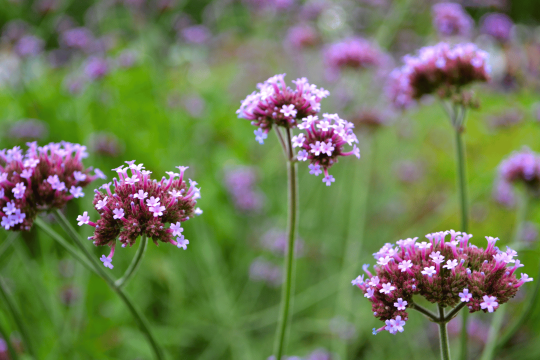
These top plant picks for contemporary garden designs offer a range of colours, forms, and textures that fit perfectly with the modern aesthetic. Whether you’re looking for striking vertical accents, delicate and intricate blooms, vibrant pops of colour, serene blue-violet tones, or an airy and whimsical touch, these plants will elevate your garden and create a harmonious and visually appealing outdoor space.
Whenever you’re ready, we’ll be happy to come along and help you plan your garden upgrade. To get one of the friendly design team to take the stress out of designing your garden click below.